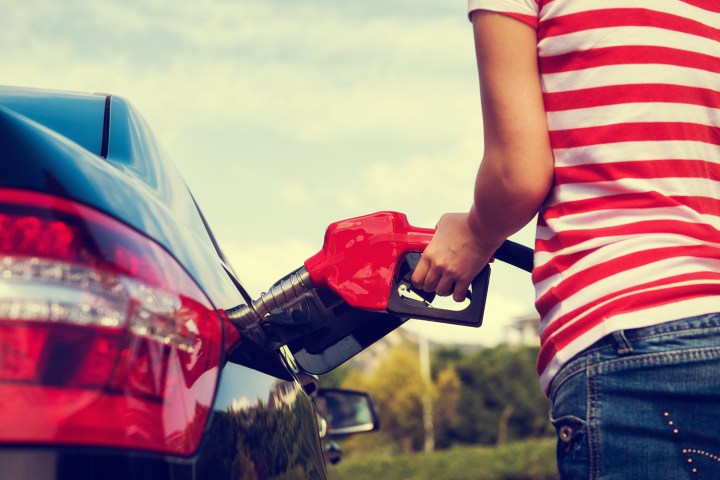
Unfortunately, there are consequences to the increased demand, and most of them come at the pump. Spendier gas blends and refinery maintenance costs all add up to more dollars per gallon of fuel, and even though prices continue to dip in 2016, this trend won’t last forever. To help stretch every drop, we’ve compiled our favorite tips to help you stay frugal during the summer driving season.
Hate saving money? Check out this list instead!
Use tech to your advantage
For most people, automotive technology applies to convenience and safety, but that’s about it. There are plenty of fuel-saving gadgets on today’s cars as well, though, some of which work without the driver doing a darn thing. We’ll get to the more complex stuff in a bit, but for now, let’s start with technologies found on almost any vehicle.
Turning on the A/C means the vehicle must work harder to travel the same speed
First things first, air conditioning. Nearly every car comes standard with A/C in 2016, and as much as we love icy blasts of air on sweltering days, A/C uses compressors that place auxiliary loads on the engine. Essentially, that means the vehicle must work harder to travel the same speed. You’re unlikely to notice any difference on short trips, but on long voyages with multiple fuel stops, your wallet might be a hair lighter. It’s also important to note that at freeway speeds, opening the windows can have an equal or greater negative impact on fuel economy by creating drag, so if you really want to pinch pennies, you might have to (literally) sweat through it.
Another common feature to help you at the pump is cruise control. Cruise control is much better at maintaining constant speed than your average humanoid, and consistent throttle input means less “surging” and more efficient resource consumption. In addition, physically taking your foot off the throttle means there’s less temptation to speed.

Newer, smarter vehicles have added a variety of contraptions that can actually change the way your car behaves. You may have noticed an “Eco” or “Econ” button on modern cars. If we’re honest, many of these switches – like the one on the 2016 Honda HR-V — are there to turn on a pretty green light and not much else, but some actually retune the transmission and throttle maps. These are the values the engine’s computer uses to optimize performance, so in Eco mode, it favors efficiency over performance, using less power. On the techier side of things, higher-end rides offer sophisticated navigation systems with optimized “EcoRoutes,” which avoid hills, traffic, and tight curves in the pursuit of greater efficiency.
Don’t be a drag
Our next piece of advice may sound like it pertains to personalities, but fear not, it actually applies to aerodynamics. Put simply, aerodynamics studies the motion of air as it interacts with a solid object, and the more aerodynamic an object is, the less energy it takes to move it.
High-end vehicles offer optimized “EcoRoute” navigation, which avoids hills, traffic, and tight curves
However, unless you’re incredibly handy with blowtorches or fiberglass molds, there isn’t a whole lot you can do about the overall shape of your car. That said, you can improve your ride’s profile by keeping the windows up, adding grill blocks or wheel covers, reducing excess weight, and keeping your tires properly inflated to decrease rolling resistance. If your ride is new enough, it may even feature intelligent aerodynamics. Examples include active grill shutters, retractable spoilers, and adjustable ride heights to minimize turbulence. An extreme example of this is the Mercedes-Benz Concept IAA, which can literally change its shape at the push of a button.
Finally, keep up to date with your vehicle maintenance. We hope this goes without saying, but a vehicle with mechanical problems or strained performance isn’t going to make those fuel stops come any less frequent.
Brain, meet foot
The unfortunate thing about maximizing fuel economy is that it takes a considerable amount of effort to do successfully, but only a fleeting lapse of concentration to undo. That’s why our final tips — which center on using appropriate techniques behind the wheel — are the most important of all.
If you’ve done research on this topic before, you may have heard of hypermiling. Hypermiling is often taken to dangerous extremes (see: drafting), but its core principals of slow acceleration, minimal braking, and steady speed have real value. The reason is simple — gaining velocity requires far more energy than maintaining it, and over time, that adds up. You should also maximize momentum by coasting as much as possible, however that requires you to anticipate hills, curves, and the position of vehicles ahead. GPS systems can help with this, but a few preparatory moments before getting in the car can yield the same results.
Planning ahead, in general, is never a bad idea. Route familiarization can help you avoid congestion, stop-and-go situations, and excessive idling, all of which burn fuel with no real benefit. Try preparing a mental ritual or even slapping a sticky note on your dashboard to remind yourself of your goals, and keep your mind focused on the task at hand. Do it right and both your car and your wallet will thank you.


